March is when Ha Giang becomes its softest and most vibrant self. The once-harsh gray limestone landscapes transform under a colorful blanket of pale pink peach blossoms, pure white plum flowers, brilliant yellow canola fields, and the rich red of cotton trees. The gentle late spring sunshine brings warmth to every village and valley after months of winter chill. Each road and curve becomes more inviting, welcoming travelers to experience the highland’s seasonal transformation.
If you’re planning a trip to Ha Giang in March, this guide from Phieu Travel will help you discover where to go, what to eat, where to stay, and how to prepare for your upcoming adventure.
1. Is Ha Giang cold in March?
Ha Giang in March begins to warm up as the region transitions from spring to summer. During daytime, temperatures range from 15-28°C (59-82°F), with gentle sunshine, minimal rainfall, and soft light that’s perfect for outdoor activities. The dry weather creates ideal conditions for travel, sightseeing, and photography.
Nights and early mornings remain cooler at 10-18°C (50-64°F), especially in areas above 1,000 meters like Dong Van and Meo Vac. While March’s chill isn’t as biting as mid-winter, it’s still enough to make your face and hands tingle when riding through mountain passes for sunrise views. Occasionally, fog appears, shrouding paths and adding a mystical quality to the landscape.
The Best Time to Visit Ha Giang: A Seasonal Guide to Flowers & Festivals
2. Beautiful flower seasons in Ha Giang during March
When you visit Ha Giang in March, you’ll witness the gray limestone terrain transformed by nature’s colors. Pink peach blossoms adorn hillsides, white plum flowers blanket pathways, red cotton trees stand tall against the sky, and yellow canola fields stretch across valley floors. Each section of your journey brings a new palette of colors, turning the trip into an unforgettable visual experience.
2.1 Pink peach blossoms on rocky slopes
As you navigate the mountain passes in March, you’ll occasionally spot splashes of vibrant pink against the gray backdrop. These are late-season peach blossoms, holding onto spring’s colors across Ha Giang’s highlands.

Peach blossoms in this region have thick petals and deep pink coloring, distinct from the delicate blooms found in lowland areas. Each variety has its own character—Dao Phai with light pink tones, Dao Bich with deeper coloration, and wild peach with smaller flowers and thinner petals.
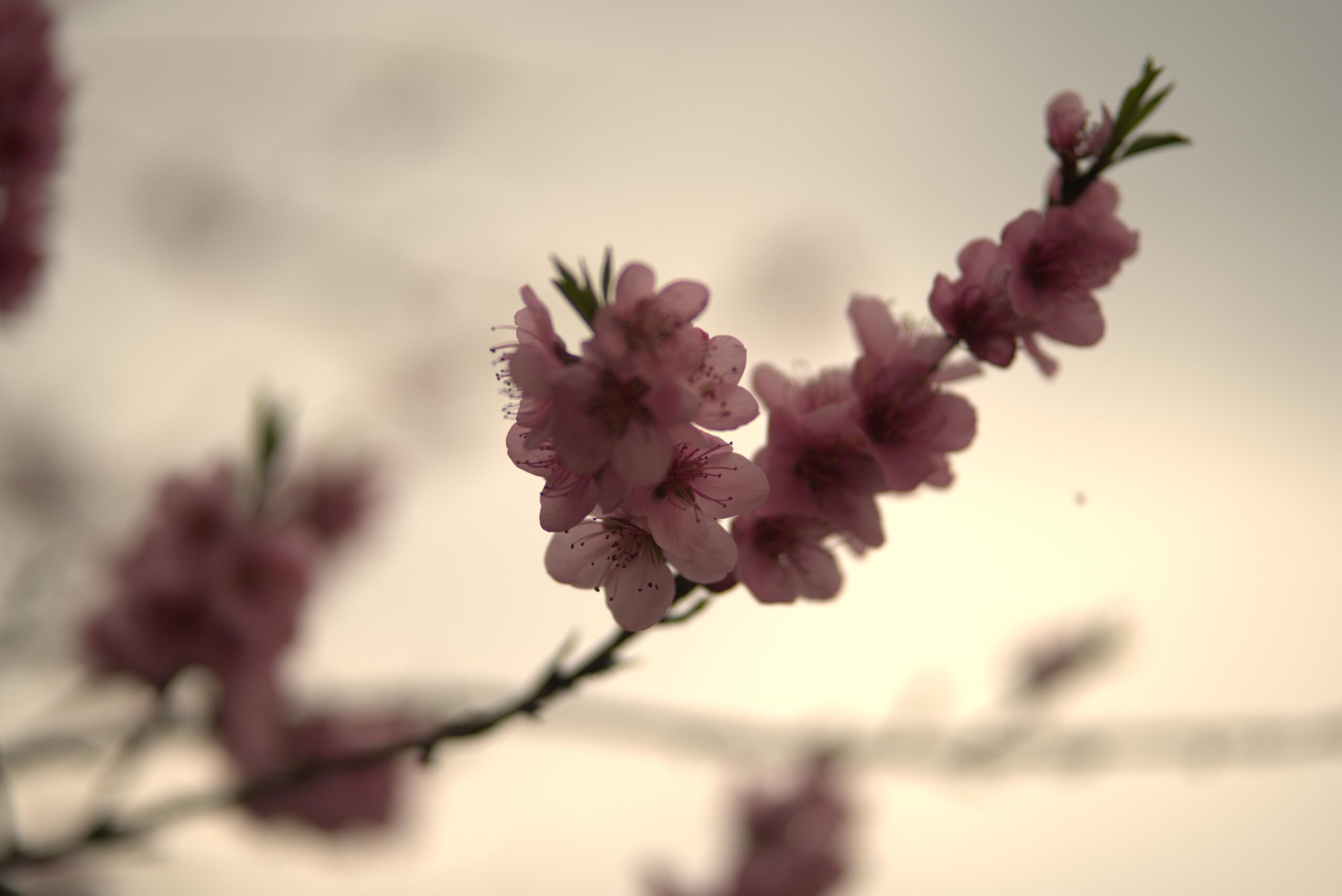
Throughout villages in Dong Van, Meo Vac, Lung Cu, and Quan Ba, peach trees bloom in gardens, along roadsides, on slopes, and even clinging to cliff faces above 1,000 meters. Many peach trees have existed for decades, with gnarled trunks and abundant foliage standing resilient amid the highland terrain.
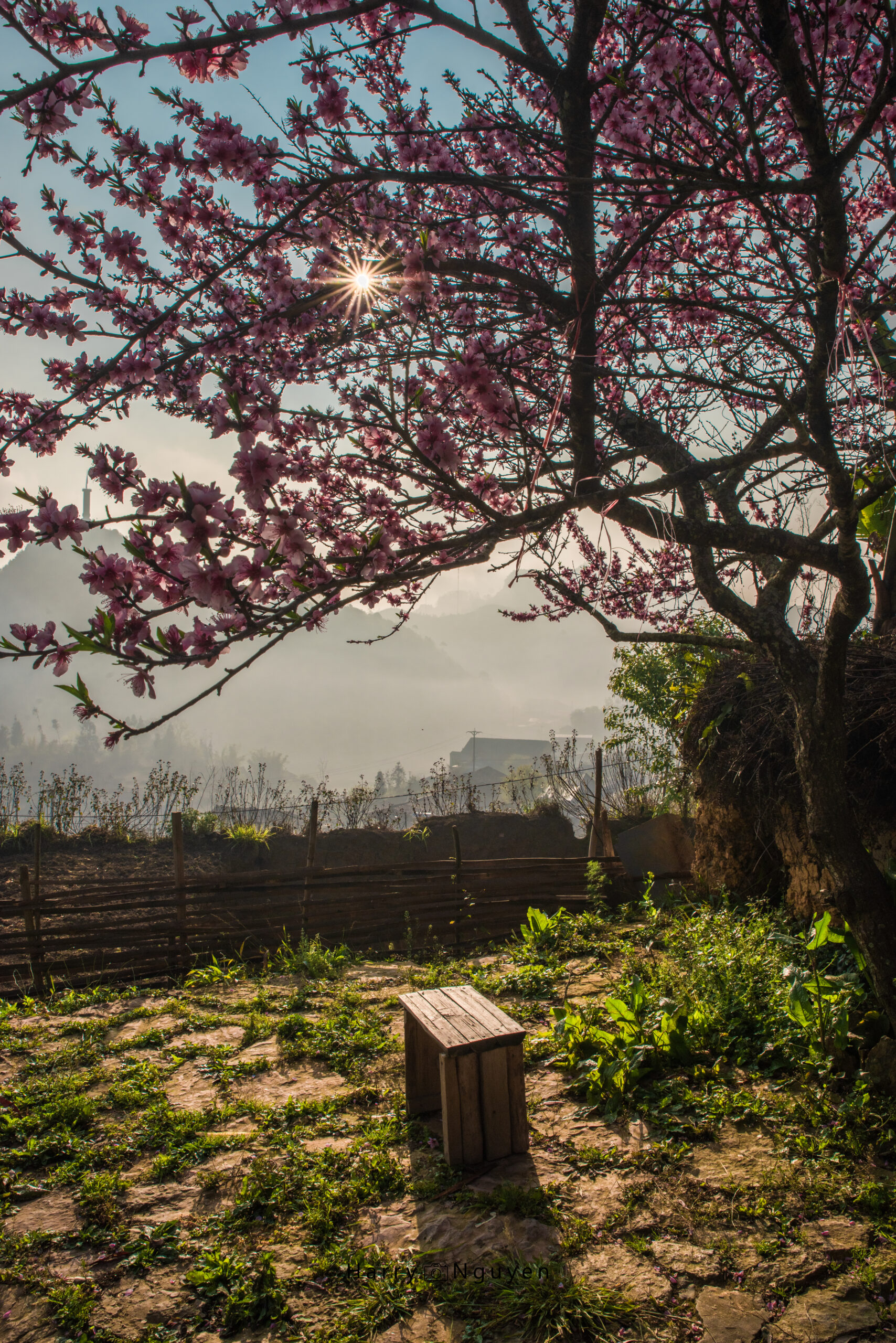
For local residents, peach blossoms signal the approaching Tet holiday. When these trees burst into bloom, families begin cleaning their homes and preparing altars for the new year. A peach branch placed in the main room isn’t merely decorative it represents hopes for good fortune, successful harvests, and prosperity in the coming year.

2.2 White plum blossoms lining the paths
On Ha Giang’s higher slopes, when March sunshine is just warm enough to dry the morning dew, plum blossoms begin to open. White flowers stretch across valleys from Dong Van and Sung La to the hillsides around Quan Ba, covering small slopes and winding paths leading to villages. The entire landscape becomes serene, pure, and peaceful.
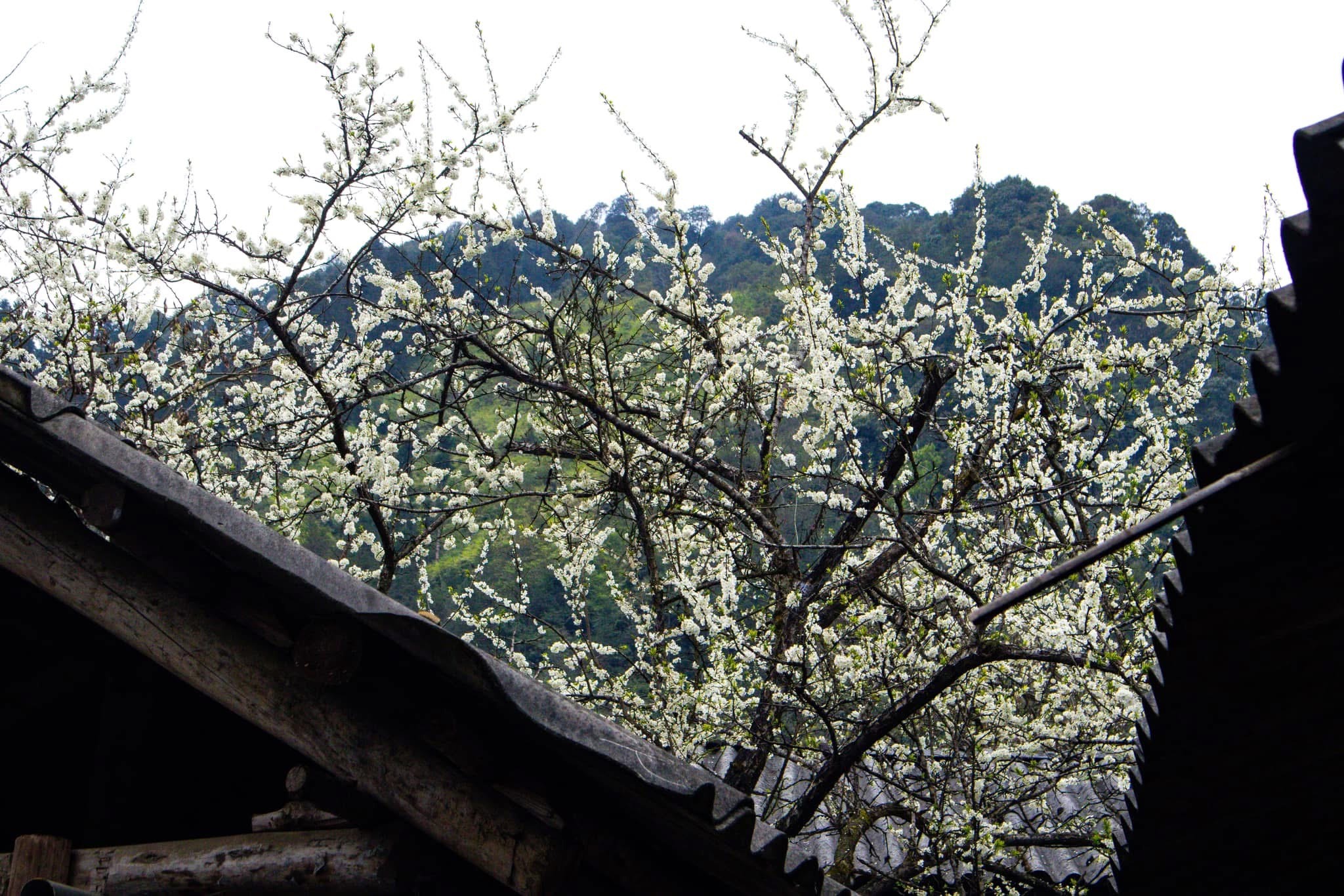
Ha Giang has several plum varieties, but the most common are Tam Hoa, Plum Hau, and Plum Com. Tam Hoa has three large, thick petals. Plum Hau features five evenly rounded petals. Plum Com has six petals, smaller and thinner than the others. During blooming season, flowers from all three varieties cluster densely on branches, making entire hillsides appear to glow under the late spring sunshine.
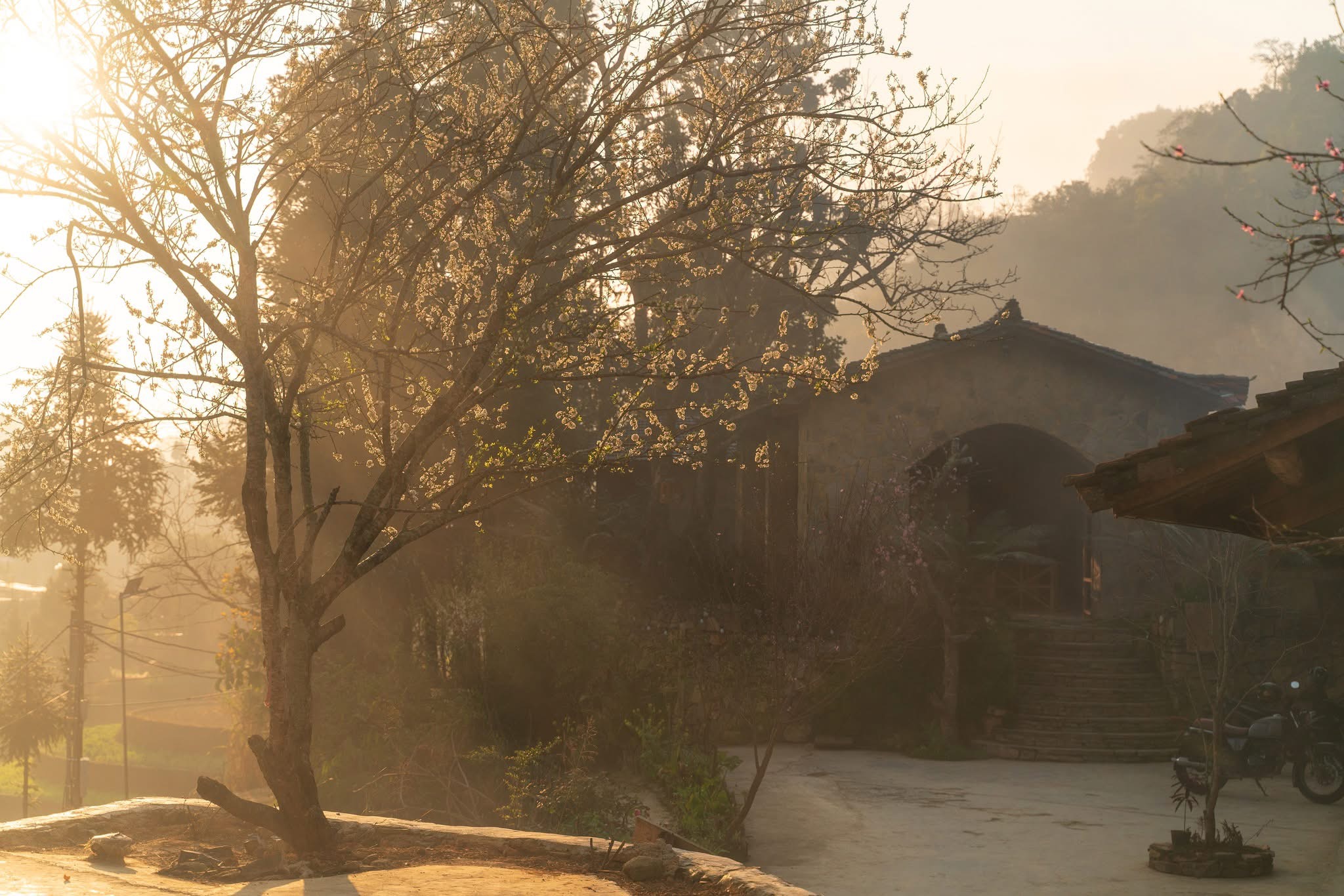
After flowering, plum trees begin forming fruit. The plums develop dark purple skin, deep red flesh, and a sweet flavor with slight tartness. When harvest time arrives, ripe plums are carried down to markets, becoming a familiar income source for many Ha Giang families.
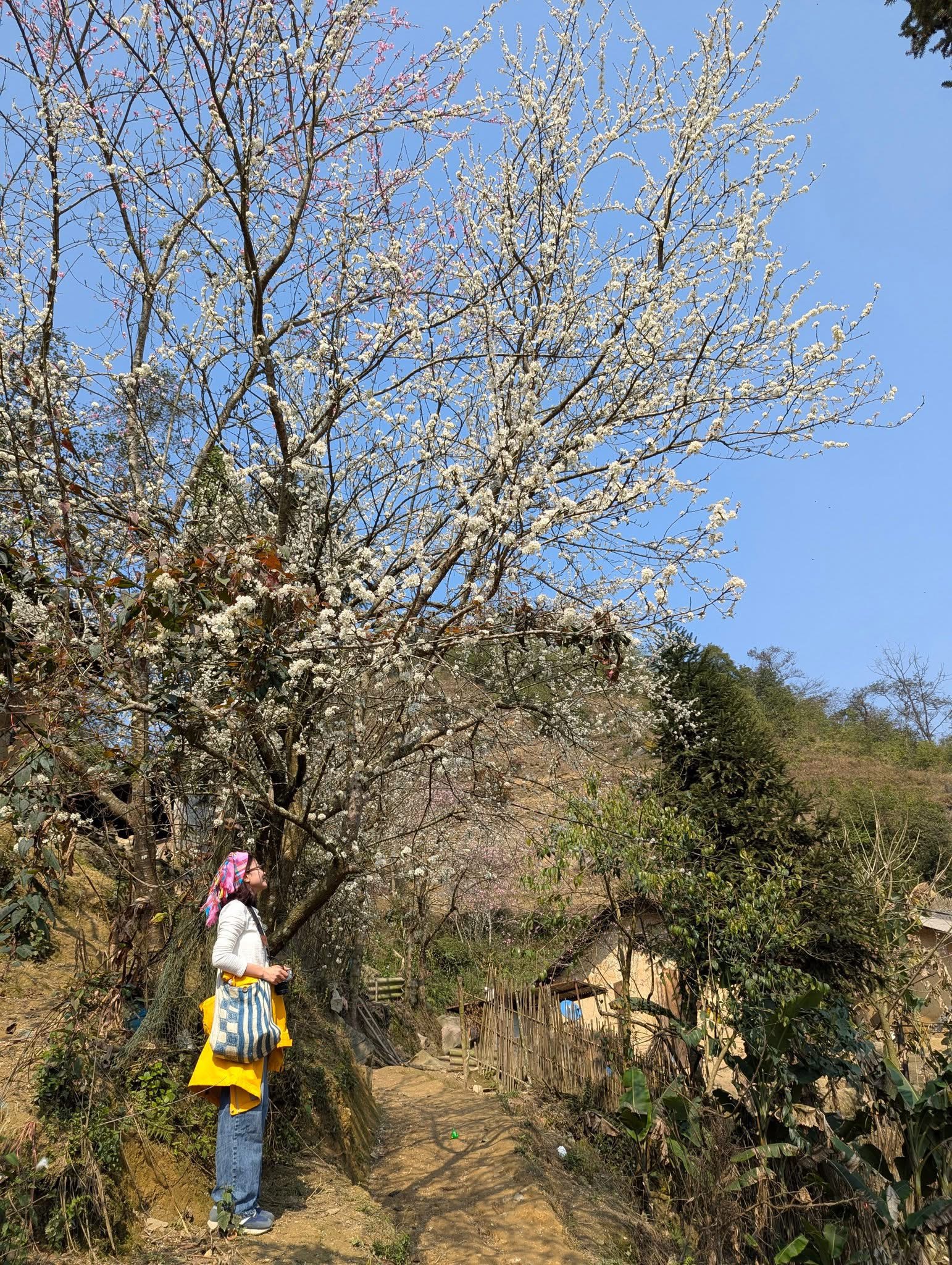
2.3 Vibrant red cotton flowers against the gray backdrop
As March begins, ancient cotton trees across Ha Giang’s limestone plateau burst into bloom. Against the lingering humid sky, the red hues of each cotton flower appear like flames illuminating the gray limestone landscape. The trees stand silently on hillsides or beside roads, but with each flowering season, they bring vibrant life to the surrounding space.
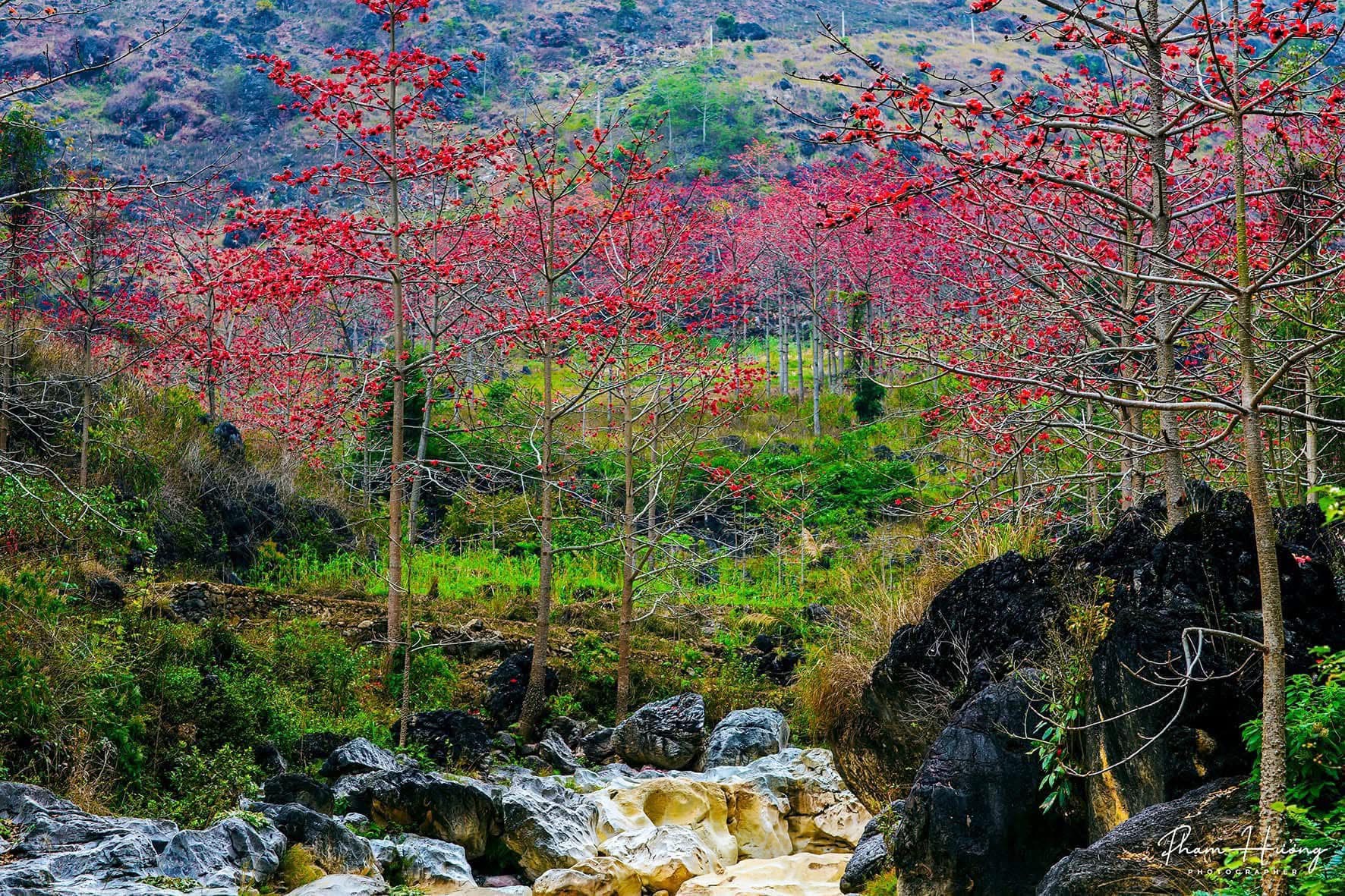
Ha Giang’s cotton flowers display various shades, from the deep red of glutinous cotton, the lighter red of ordinary cotton, to the gentle orange of brown cotton. Each five-petaled flower grows in clusters on bare, leafless branches. Against the backdrop of limestone mountains and sprawling fields, these red blooms stand out prominently, like bright brushstrokes across the gray canvas, illuminating entire villages.
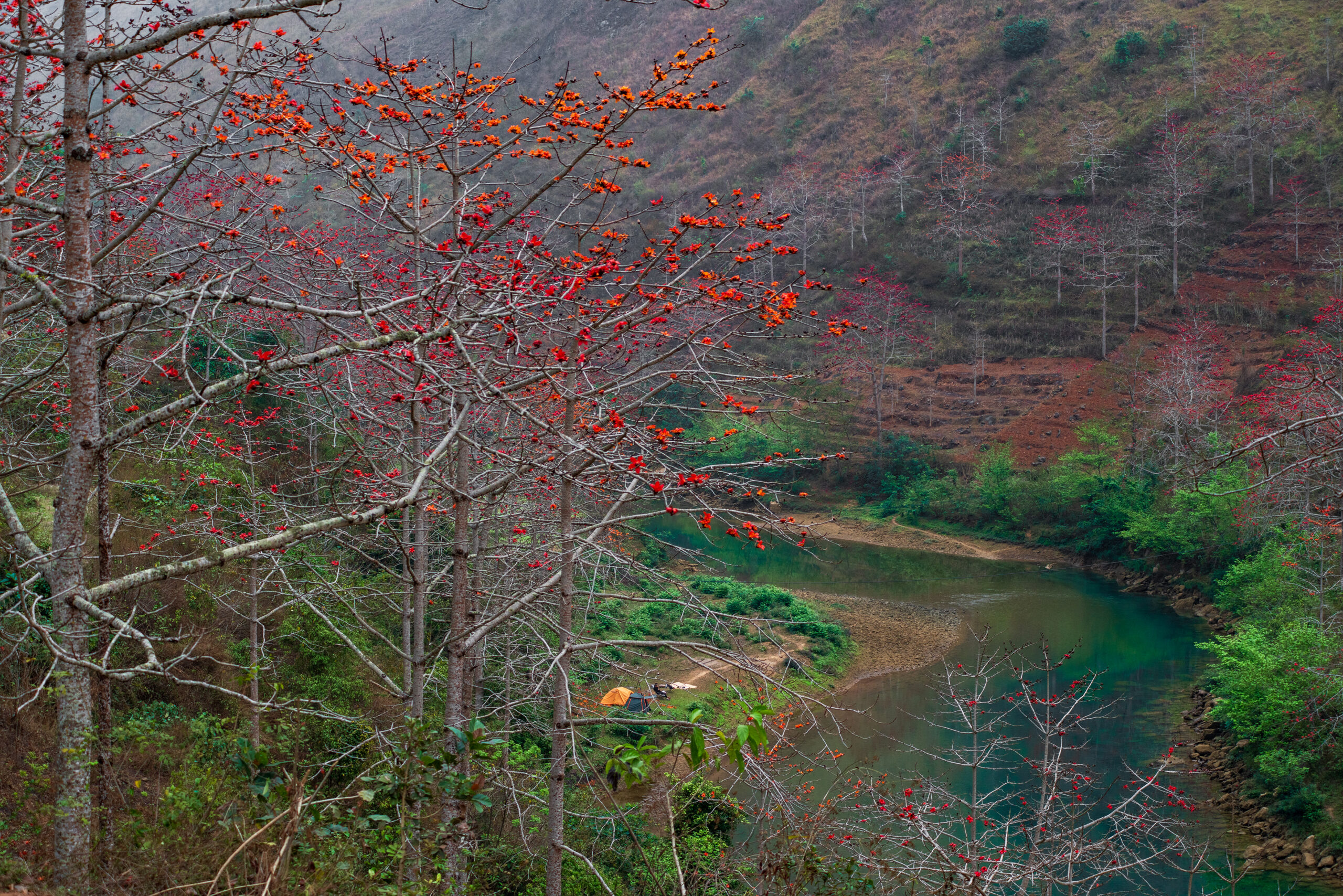
Along winding slopes or viewed from mountain passes overlooking the Nho Que River, the red cotton flowers quietly accent the deep green of forests, creating warm color patches across the vast landscape. With each breeze, petals fall slowly, forming a thin red layer beneath the trees. Though the flowering season lasts just a few days, anyone who witnesses it never forgets the experience.
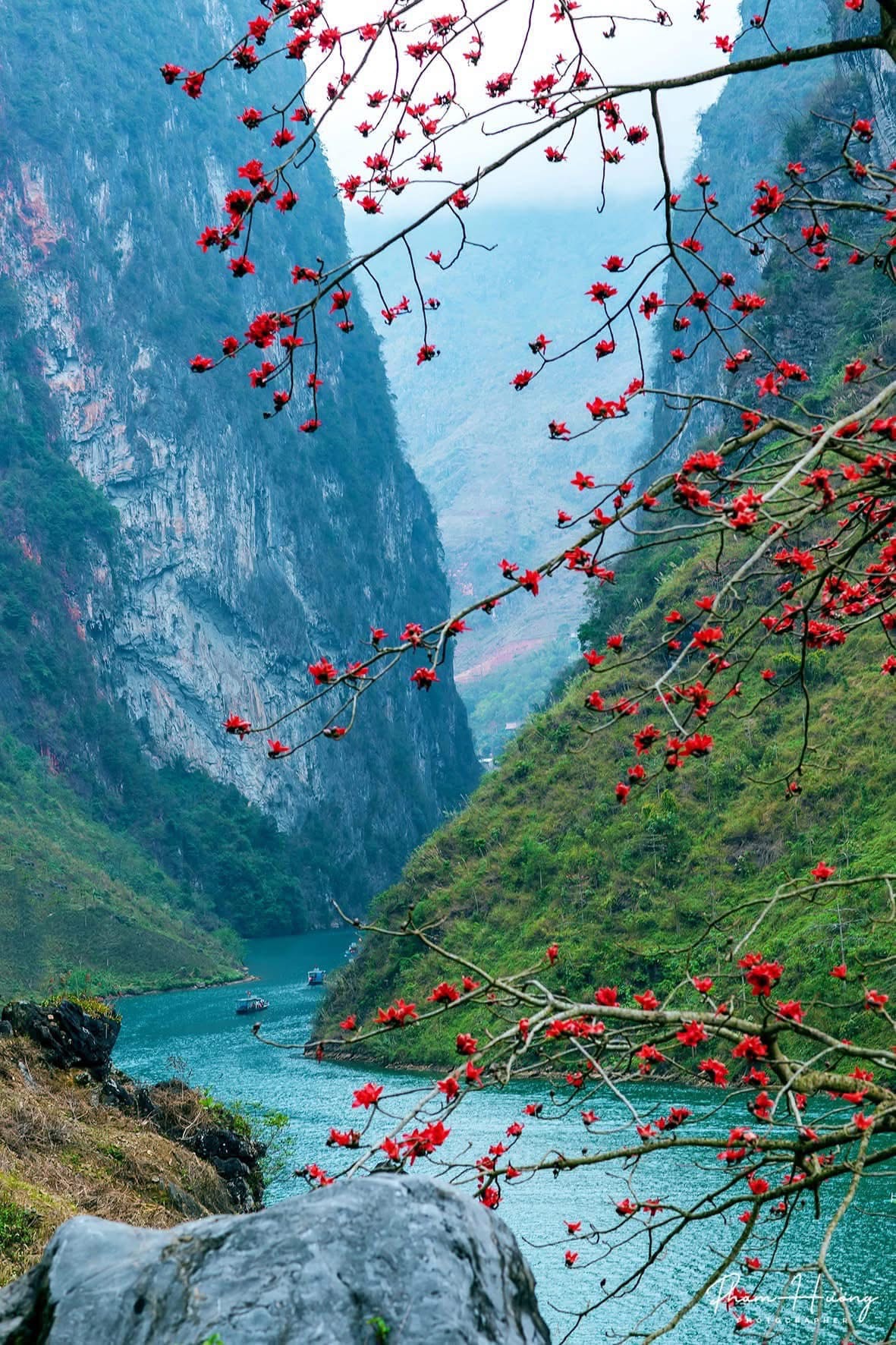
2.4 Yellow canola fields stretching across valley floors
In March, when the last morning mist dissipates, fields of yellow canola flowers light up the foot of Ha Giang’s mountains. Amid the barren gray rocks, the yellow stretches in long strips, following hillsides and embracing the narrow paths leading to villages.
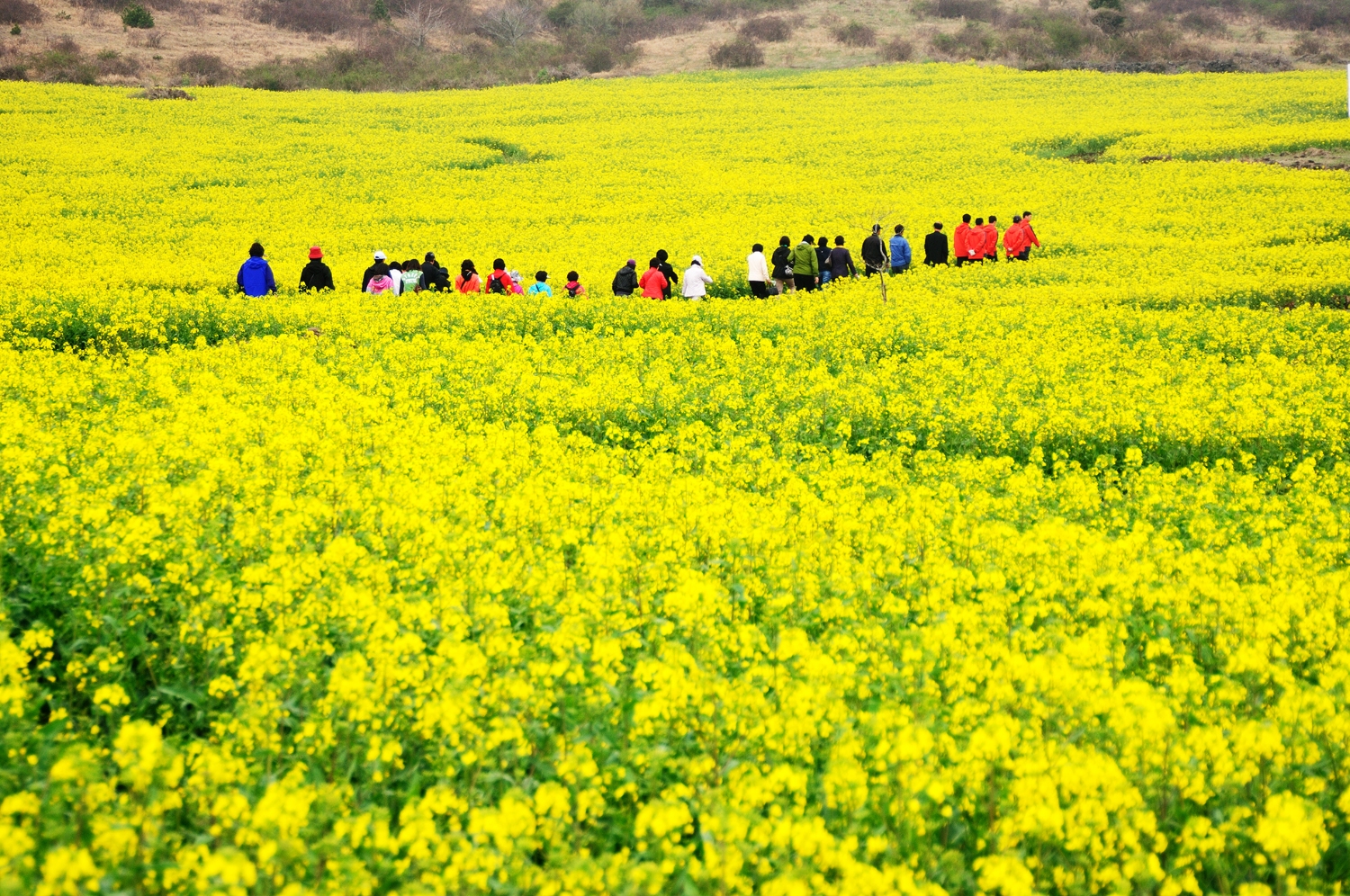
Canola flowers don’t require rich soil just a touch of early season warmth is enough to make them bloom. Under gentle light, rows of flowers sway with the wind, one layer following another like golden waves washing over empty spaces.

For highland residents, the brilliant yellow of canola flowers signals prosperity and the promise of a good harvest after cold winter months. For visitors, it’s the perfect time to wander through nature, breathe in the earthy fragrance, and capture memorable photographs.
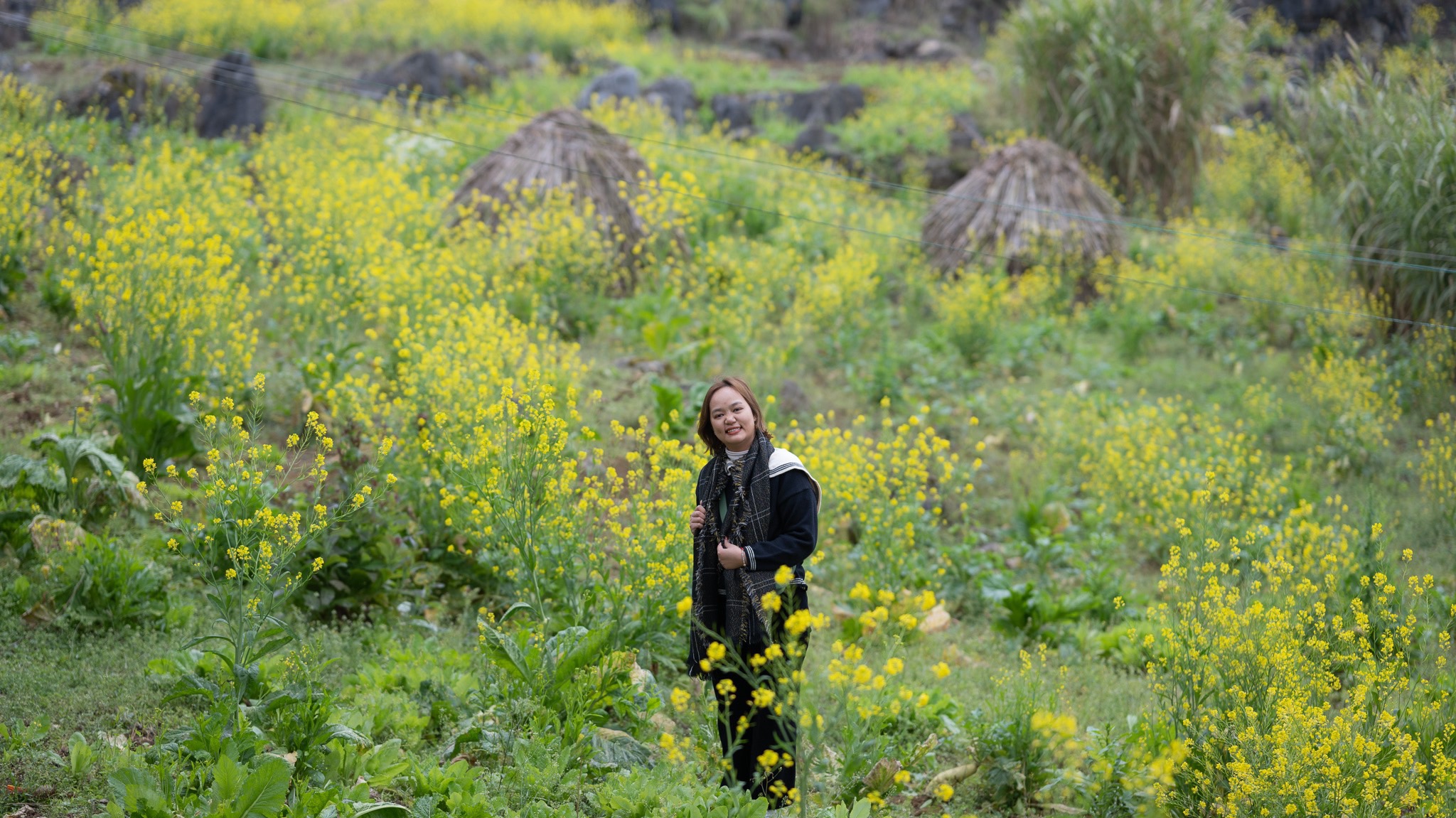
3. What to eat in Ha Giang?
Your exploration of Ha Giang would be incomplete without sampling highland cuisine. From small eateries in town to weekend markets, you’ll easily find local specialties everywhere. Prices are generally reasonable, suitable for both backpackers and larger tour groups.
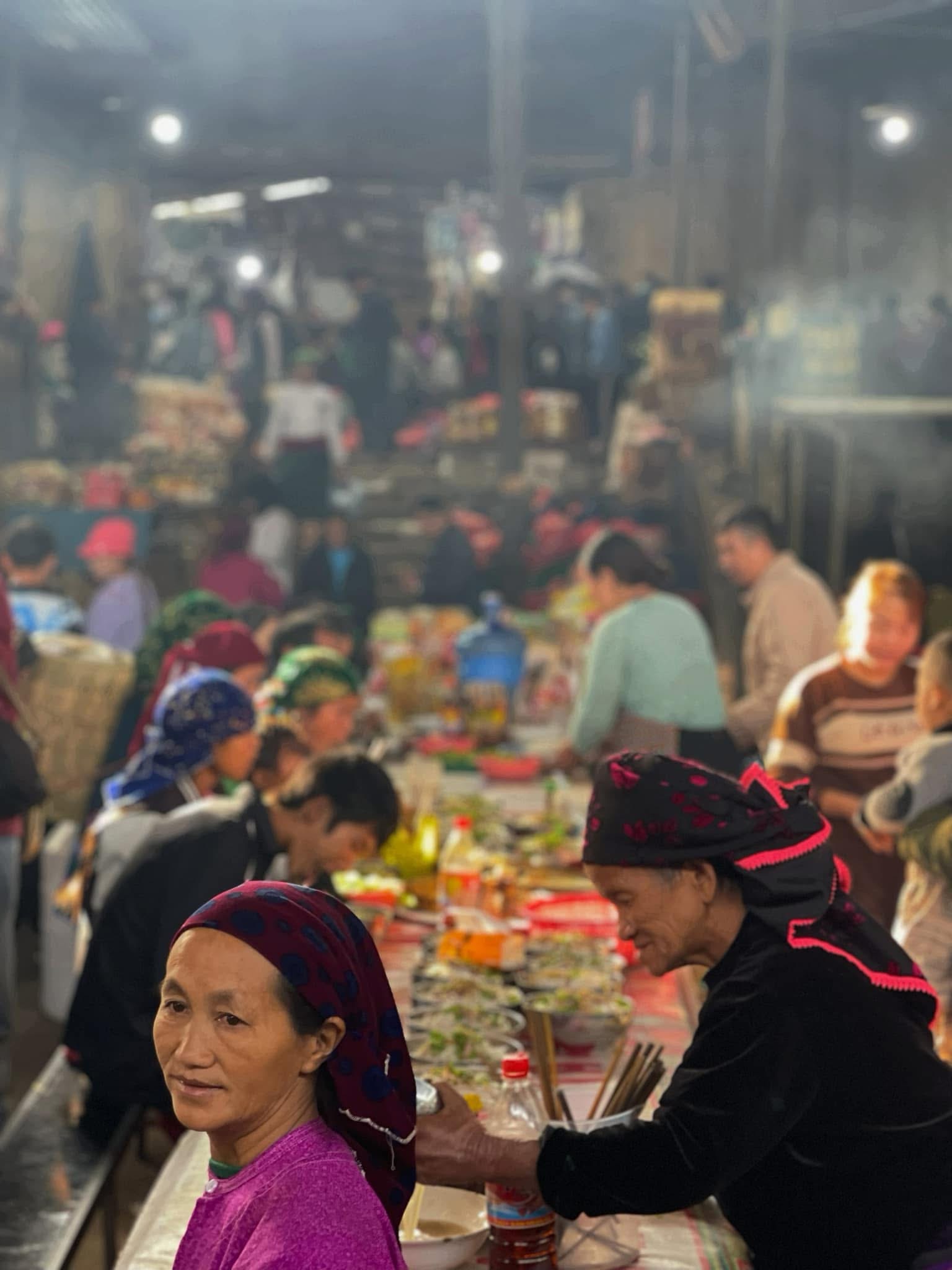
Au Tau porridge is a must-try dish when visiting Ha Giang’s limestone plateau. Au Tau root has medicinal properties but contains toxins. Local people must simmer it for over 12 hours to remove these toxins before cooking it with sticky rice, bone broth, and pork knuckle. The resulting porridge has a distinctive slight bitterness, the creaminess of rice, and a sweet undertone from simmered bones. Adding spring onions, perilla, chili, or chicken eggs enhances the flavor further.

Ha Giang rice rolls are another must-try local specialty. Unlike lowland versions typically served with sweet and sour fish sauce, Ha Giang rice rolls contain egg filling and are served with hot bone broth, garnished with scallions and sliced Vietnamese ham. In the highland chill, the soft texture of the rice paper combined with the sweet, warming broth makes this dish a favorite among many visitors.

If you want to bring a taste of Ha Giang home as a gift, consider smoked buffalo meat. The meat is cleaned, marinated with local spices like mac khen, doi seeds, ginger, and chili, then dried over a fire for many days. When eating, simply grill or steam it with hot rice, then dip in cheo sauce or chili sauce. Each tender yet chewy slice is infused with spices and smoky flavor, naturally sweet and highly addictive!
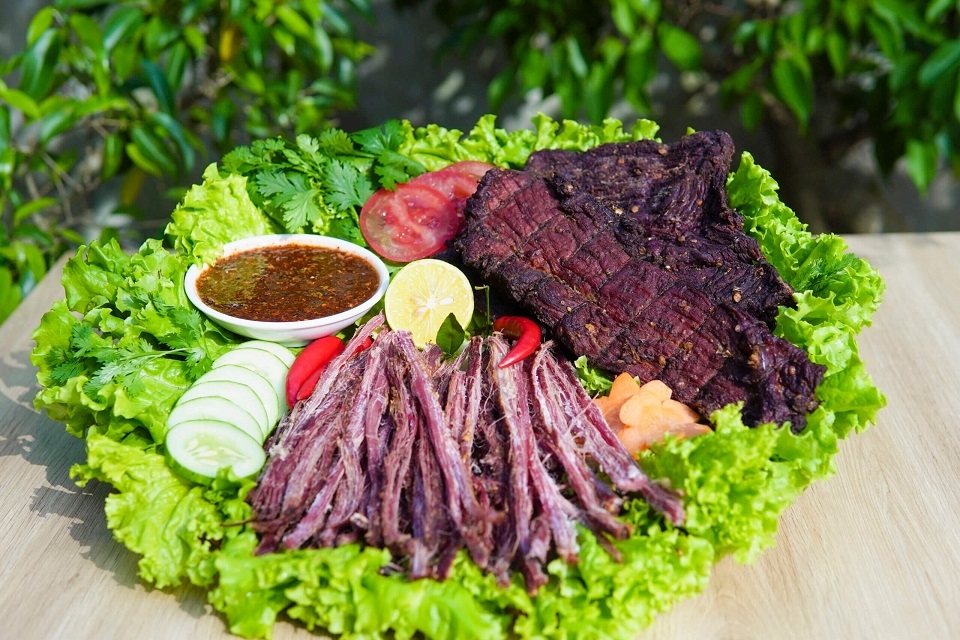
Ha Giang Sour Pho: An Irresistible 300-Year-Old Northeast Delicacy
4. Must-visit destinations in Ha Giang during March
Ha Giang in March welcomes you not only with vibrant flowers but also offers the perfect time to explore its famous attractions. These landmarks have made the limestone plateau a standout on Vietnam’s tourism map.
4.1 Exploring the Dong Van Karst Plateau
The Dong Van Karst Plateau is an essential stop when discovering Ha Giang in March. Known as the “gray paradise,” this region impresses visitors with its layered cat-ear limestone mountains, forming natural barriers around small villages.
In spring, the yellow of canola flowers, pink of peach blossoms, and pure white of plum flowers cover moss-covered rooftops, making the entire landscape come alive. Along winding roads, highland life appears simple and unhurried, blending with the colors of flowers and stone.
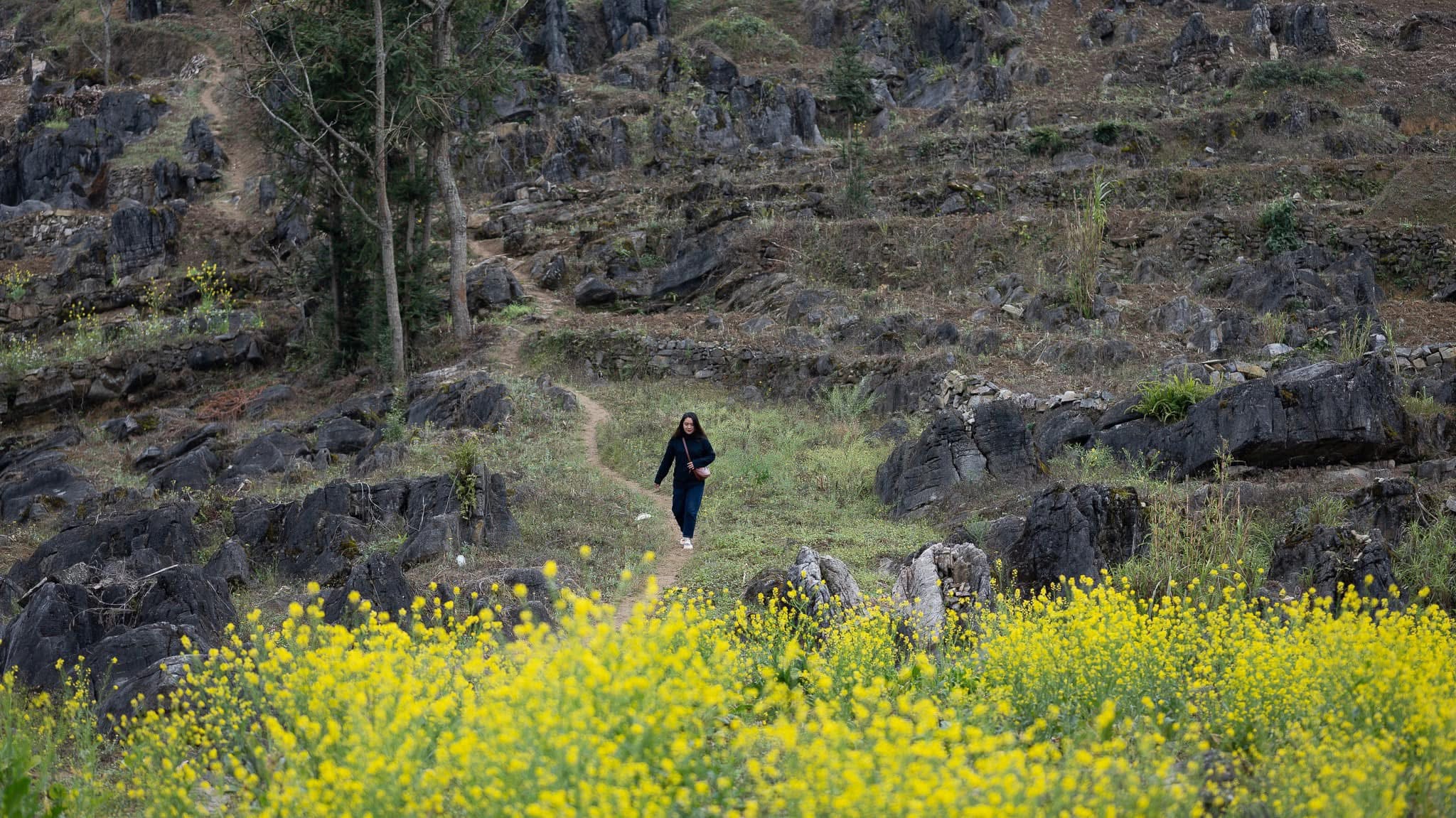
4.2 Conquering Ma Pi Leng Pass
Ma Pi Leng is one of Northeast Vietnam’s most impressive mountain passes, listed among the country’s “four great passes.” This nearly 20km stretch along the Happiness Road connects Dong Van town with Meo Vac district, winding through steep cliffs and treacherous mountain slopes.
In March, as the fog dissipates, Ma Pi Leng’s scenery becomes clearer than ever. From the pass summit, you can see deep valleys and the emerald Nho Que River snaking through mountain gaps. Along the riverbanks, the vibrant red of ancient cotton trees in bloom adds a warm color accent to the majestic natural landscape.
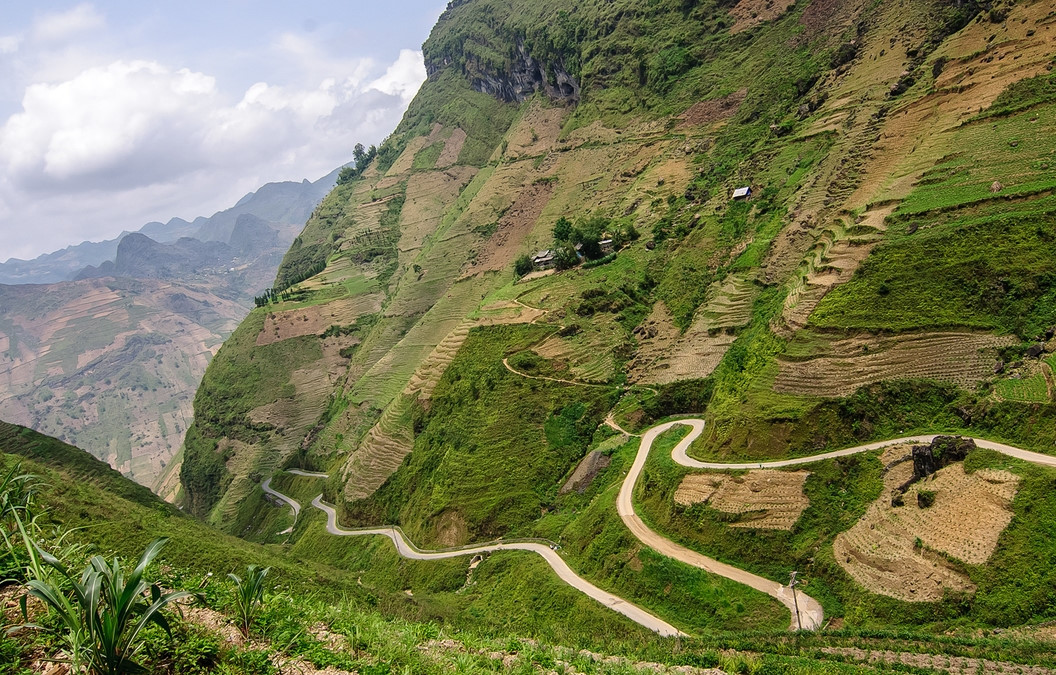
4.3 Admiring the emerald Nho Que River
Amid Ha Giang’s layered limestone mountains, the Nho Que River flows like a jade silk ribbon across vertical cliff faces. The most beautiful section begins from Seo Lung village in Lung Cu commune, winding through Tu San Gorge—known as Southeast Asia’s deepest canyon.
Viewed from Ma Pi Leng’s summit, the water appears crystal clear, standing out against the deep green of surrounding forests. To fully appreciate this beauty, visitors can take motorboat trips through Tu San Gorge or paddle along the river themselves. In this cool environment, looking up at towering cliffs while listening to paddles break the water’s surface creates an unforgettable experience.
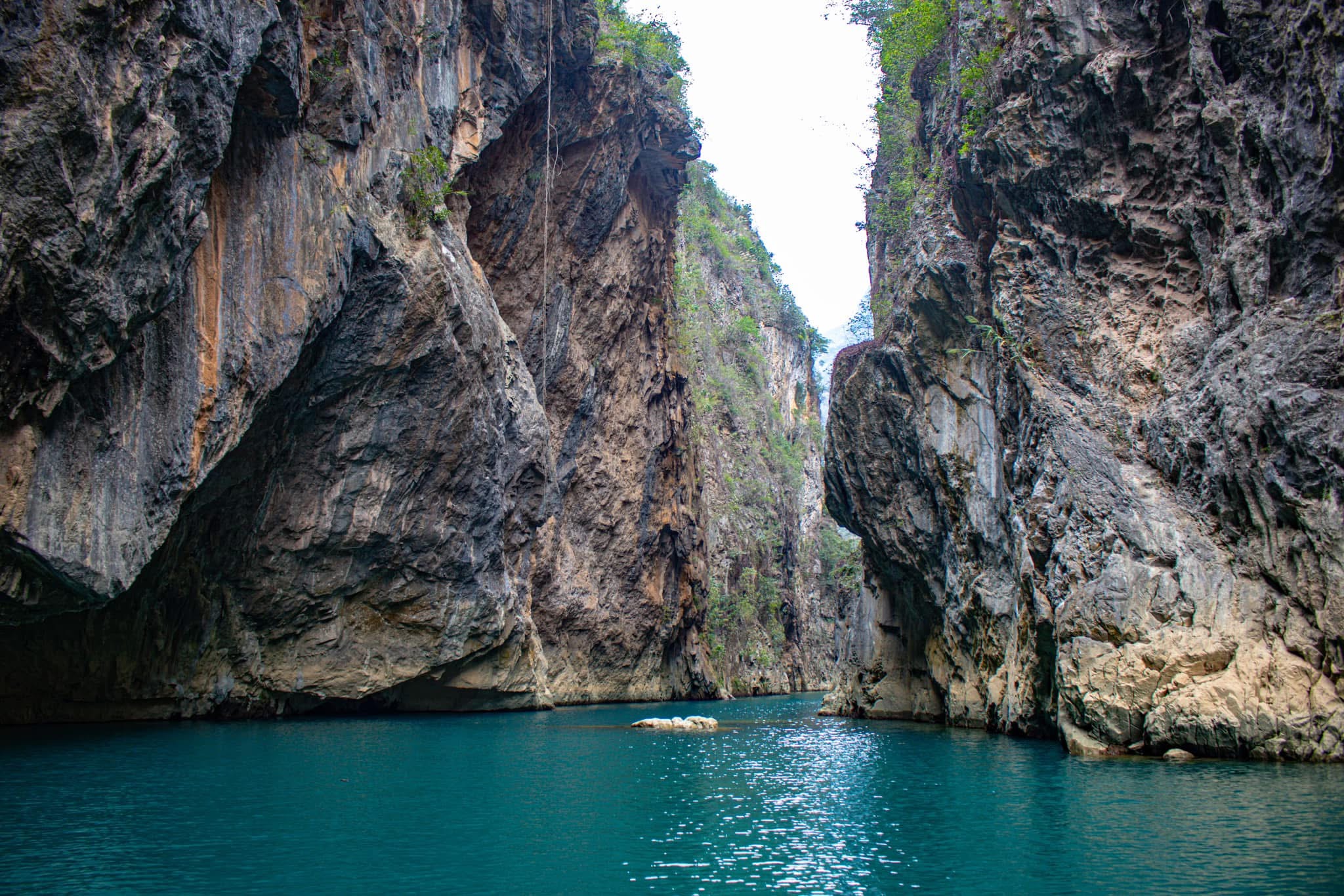
4.4 Visiting Pao’s House
Nestled in Lung Cam cultural village, Pao’s House showcases the simple beauty and distinctive character of Hmong culture on the limestone plateau. The rammed earth house with weathered yin-yang roof tiles has aged gracefully over time. Just beyond the gate stand gnarled peach and plum trees that bloom with pink and white blossoms each spring, creating the quintessential highland scenery.
This location served as the main setting for “The Story of Pao”—a film that won the prestigious Golden Apricot award. Walking across stone steps and listening to wind whisper through old roof tiles, visitors easily connect with the slow, peaceful rhythm of life in Ha Giang’s highlands.
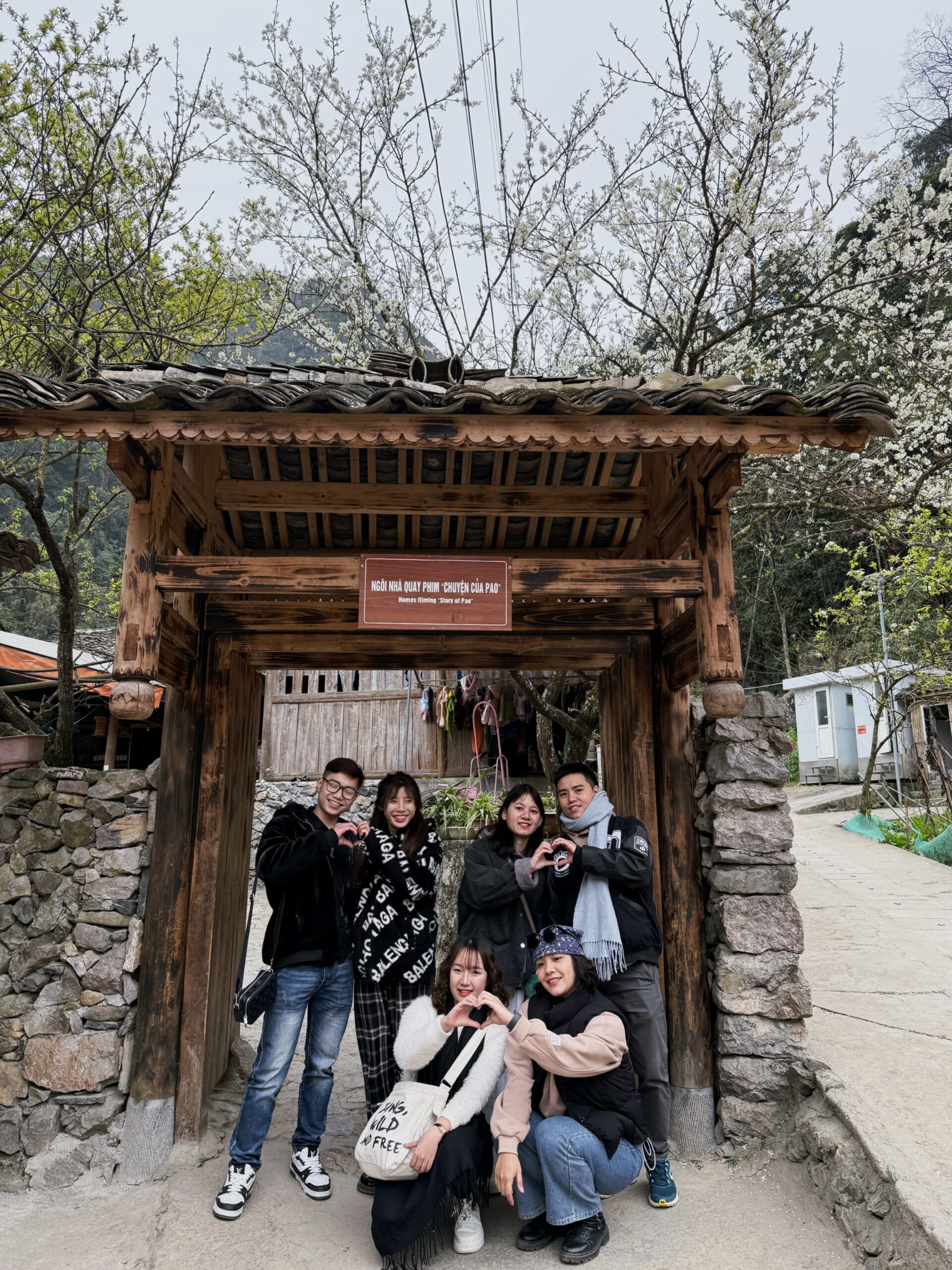
4.5 Check-in at Lung Cu Flag Tower
Standing approximately 1,700 meters above sea level atop Dragon Mountain, Lung Cu Flag Tower marks Vietnam’s northernmost point. This sacred landmark sits on the border between Vietnam and China, near the emerald Nho Que River.
From the tower’s summit, you can see endless mountain ranges and small villages nestled in valleys below. In this expansive space, the 54-square-meter red flag with yellow star waves in the wind, evoking indescribable national pride. The moment of standing beneath the flagpole, looking up at the national flag flying above the border landscape, leaves a lasting impression on many visitors.
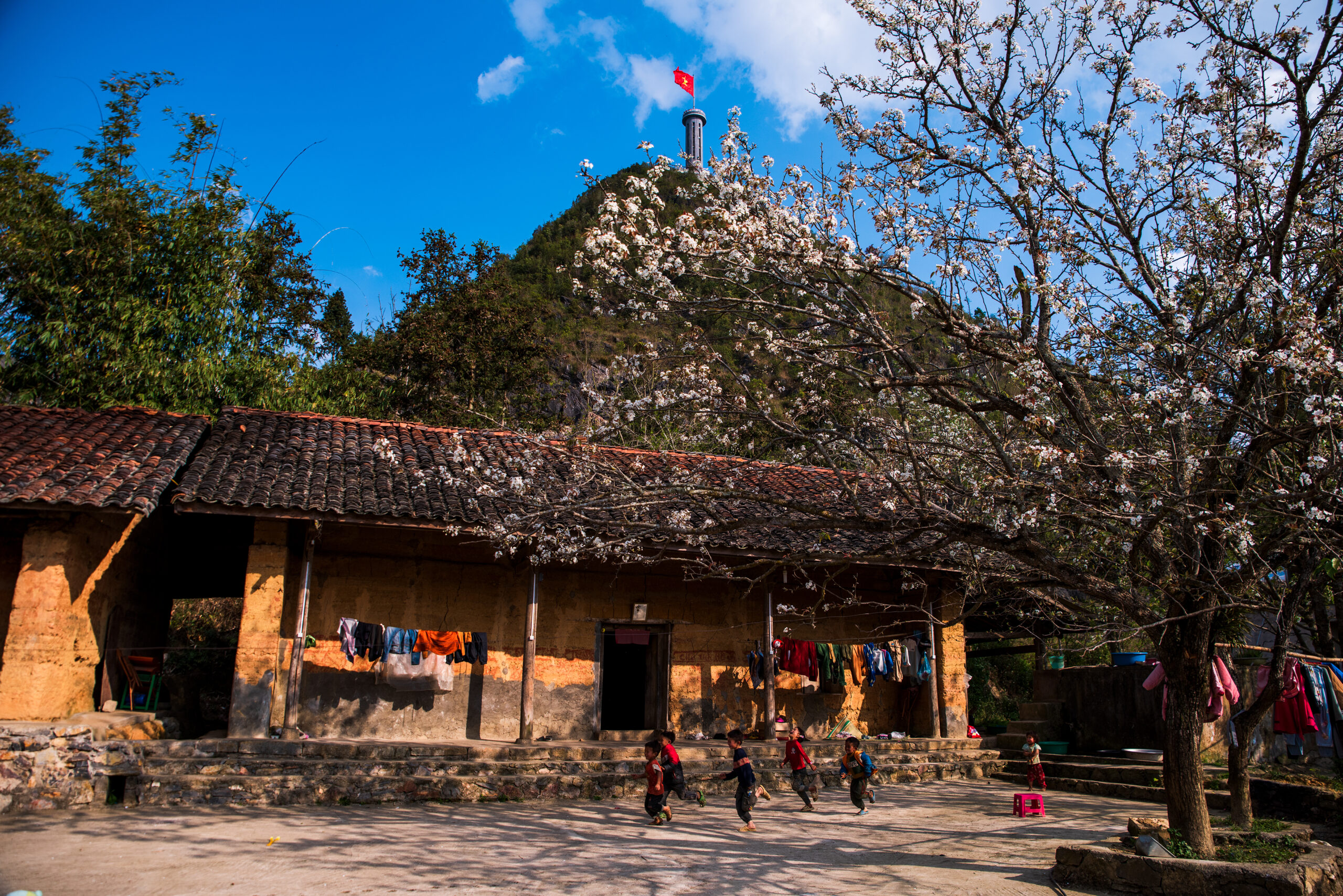
4.6 Experiencing Sa Phin backward market
Sa Phin backward market is one of Ha Giang’s four most unique rotating markets. Unlike regular markets that follow a fixed weekly schedule, Sa Phin backward market occurs every six days, moving back one day each week compared to the previous week. This shifting rhythm makes the market an unpredictable rendezvous point, adding excitement for both locals and tourists.
If you visit in March, you’ll see peach trees at the market entrance in full bloom, painting the pathways pink. Highland residents arrive very early for market day. By 7-8 AM, the atmosphere becomes lively, with goods displayed everywhere—from agricultural products and textiles to familiar mountain merchandise. Around 9 AM, the market begins to wind down as sellers and buyers pack up to return to their villages.
During these brief market hours, you’ll easily encounter cheerful conversations, hearty laughter, and even simple dates happening amid the spring highland setting.
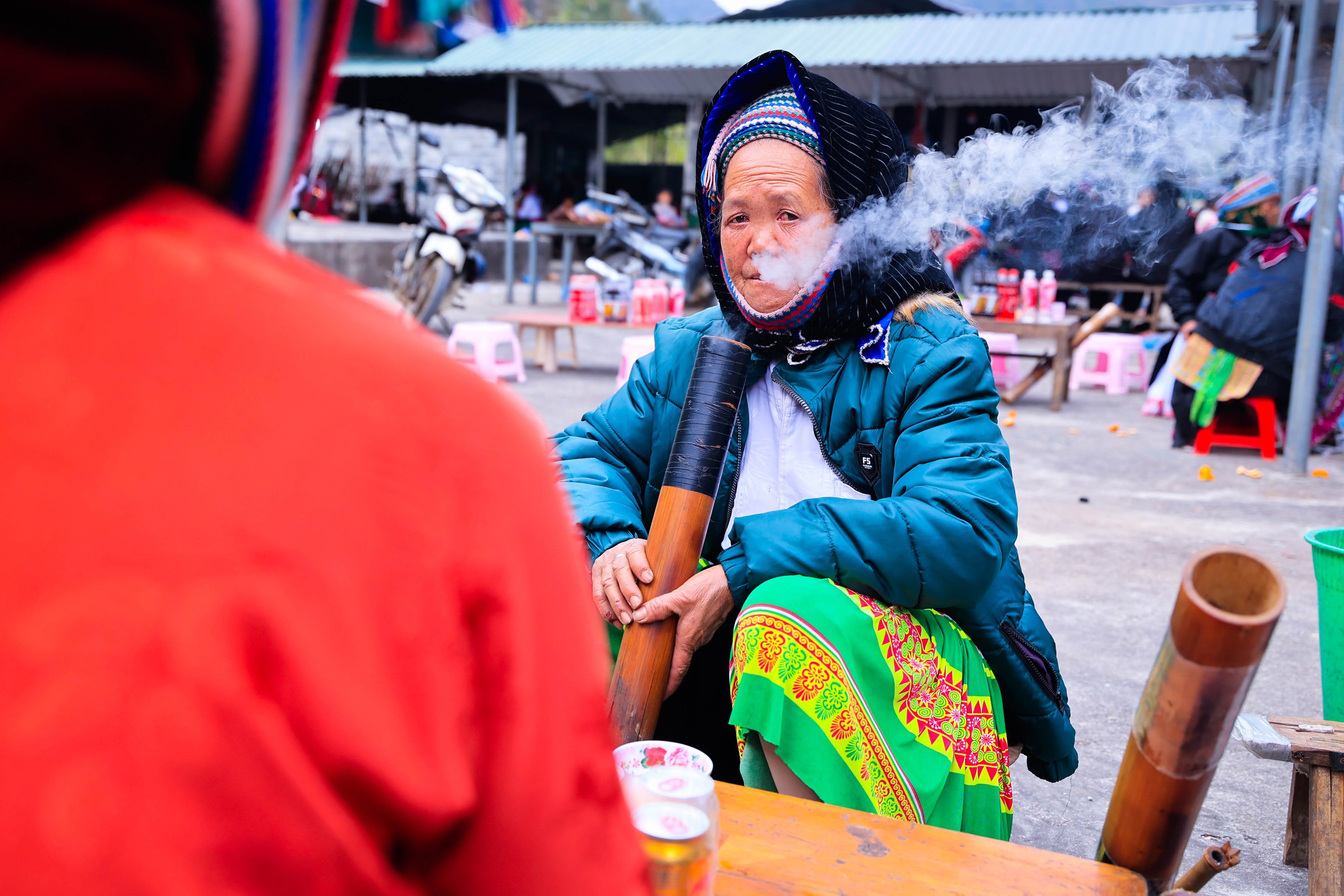
4.7 Strolling through Sung La Valley
Amid the gray limestone plateau, Sung La Valley appears as a soft highlight, often compared to a vibrant flower of the far north. The terrain consists primarily of sharp cat-ear rock formations, yet flowers still manage to grow among them, bringing vibrant colors to the gray stone backdrop.
March is when Sung La Valley brightens with peach blossoms, plum flowers, and yellow canola. Along narrow paths, simple rammed earth houses peek through flower patches, creating a peaceful, humble picture. What could be better than walking through this space, letting your spirit follow the colors, listening to the slow rhythm of highland life, and capturing beautiful moments during your March journey through Ha Giang?
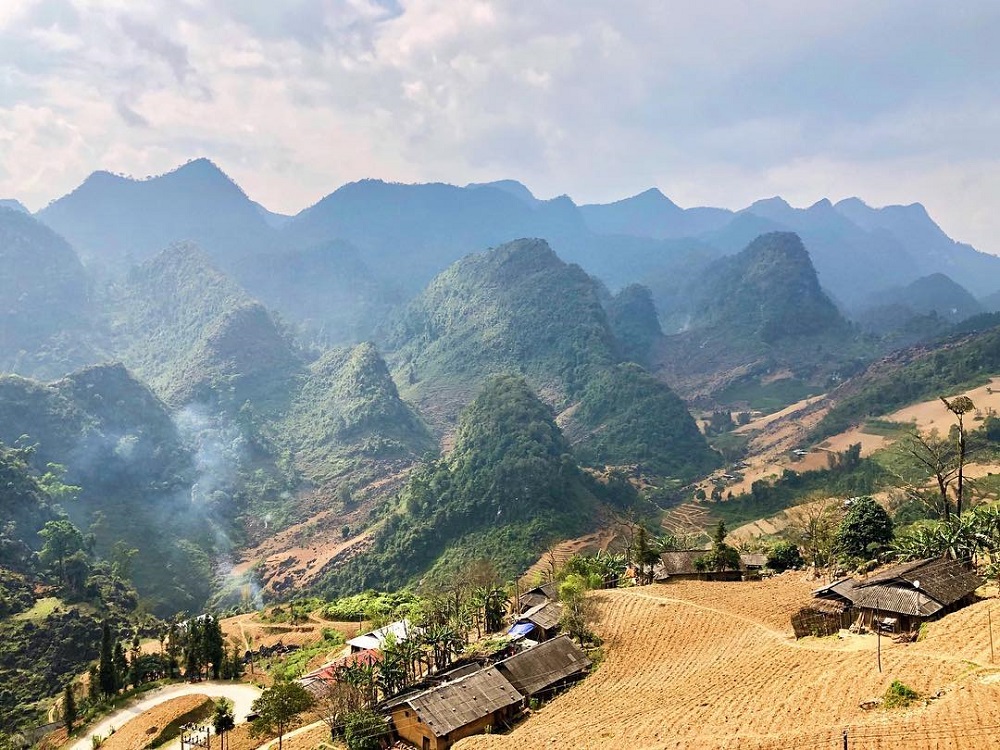
5. Where to stay in Ha Giang during March?
Depending on your itinerary, you can stay in Ha Giang City center or near towns like Dong Van and Meo Vac for convenient travel. Some popular hotels and hostels frequently chosen by travelers include:
Ha Giang Hostel
Nature-inspired space with full amenities. The hostel offers both dorm rooms for groups and private rooms for women, perfect for backpackers.
- Address: 74 Duong Doi Cau Me, Ha Giang City
Thien Thanh Hotel
A 2-star hotel located in the city center with modern design and elevator access. Rooms are neat with basic amenities, suitable for tourists or short business trips. The staff is attentive and friendly.
- Address: 37 Minh Khai, Ha Giang City
Green Hill Hostel & Homestay
An affordable option offering clean spaces with full amenities. Reception is available 24/7. The in-house restaurant serves local dishes. Conveniently located in Quang Trung ward for easy transportation.
- Address: 529A Nguyen Van Linh, Quang Trung Ward, Ha Giang City
Binh An Hostel
Located in central Dong Van town. Rooms are clean with comfortable bedding. Some rooms offer town views.
- Address: No. 93, Group 2, Dong Van Town, Ha Giang Province
Tam Giac Mach Hotel
A 3-star hotel with modern rooms featuring amenities like air conditioning, TV, and free WiFi. Some rooms have mountain or city views. The 24/7 reception staff can communicate in both Vietnamese and English.
- Address: 288 Ly Tu Trong, Ha Giang City
6. Ha Giang tours available at Phieu Travel
Exploring Ha Giang in March becomes easier and more fulfilling when you travel with Phieu Travel. We’ve designed 2-day/1-night, 3-day/2-night, and 4-day/3-night tours that take you through the most beautiful and notable stops. Depending on your preference, you can choose motorbike tours, guided motorbike tours, shared vehicle tours, or private car tours, suitable for solo travelers, friend groups, or families.
Why you should explore Ha Giang in March with Phieu Travel:
- Logically designed routes following each road segment, helping customers maintain their health and comfortable spirits throughout the journey. We also offer custom tour designs based on customer requirements.
- Tour prices include all services: transportation, accommodation, meals, drinks, and entrance fees.
- Our guides are locals who understand the terrain, culture, and especially know the best flower-viewing spots in March.
- All vehicles are thoroughly checked before departure, ensuring safety on every route.
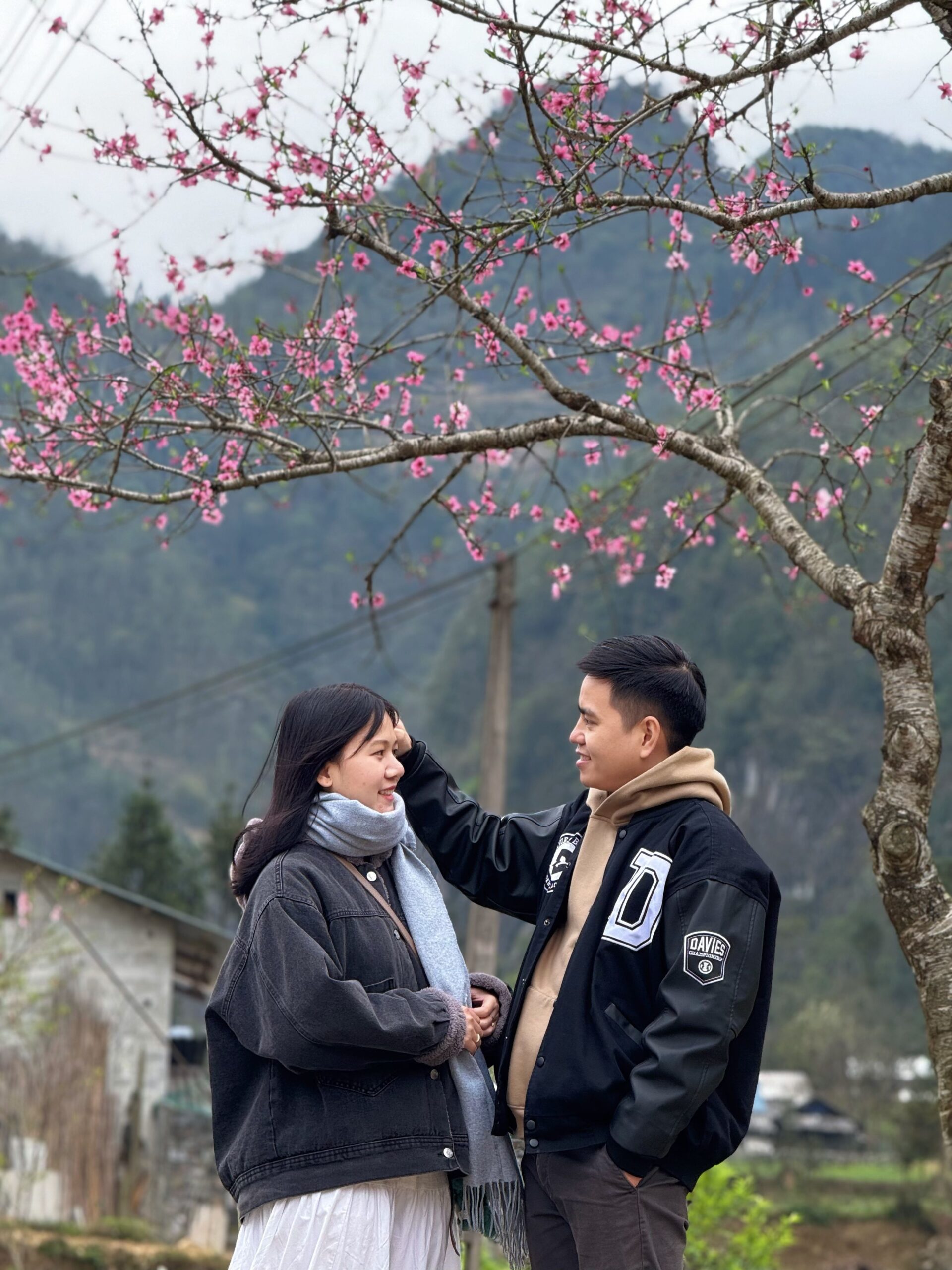
7. What to wear in Ha Giang during March?
In March, Ha Giang’s weather remains slightly cool, especially during early mornings and evenings. During daytime, with mild sunshine and comfortable air, you can wear t-shirts, jeans, or long skirts, paired with a light jacket.
As afternoon approaches, the temperature drops, and a medium-thickness jacket will help keep you warm. When night falls, temperatures decrease rapidly, so you should pack thick sweaters, wool coats, or down jackets to stay warm when moving outdoors.
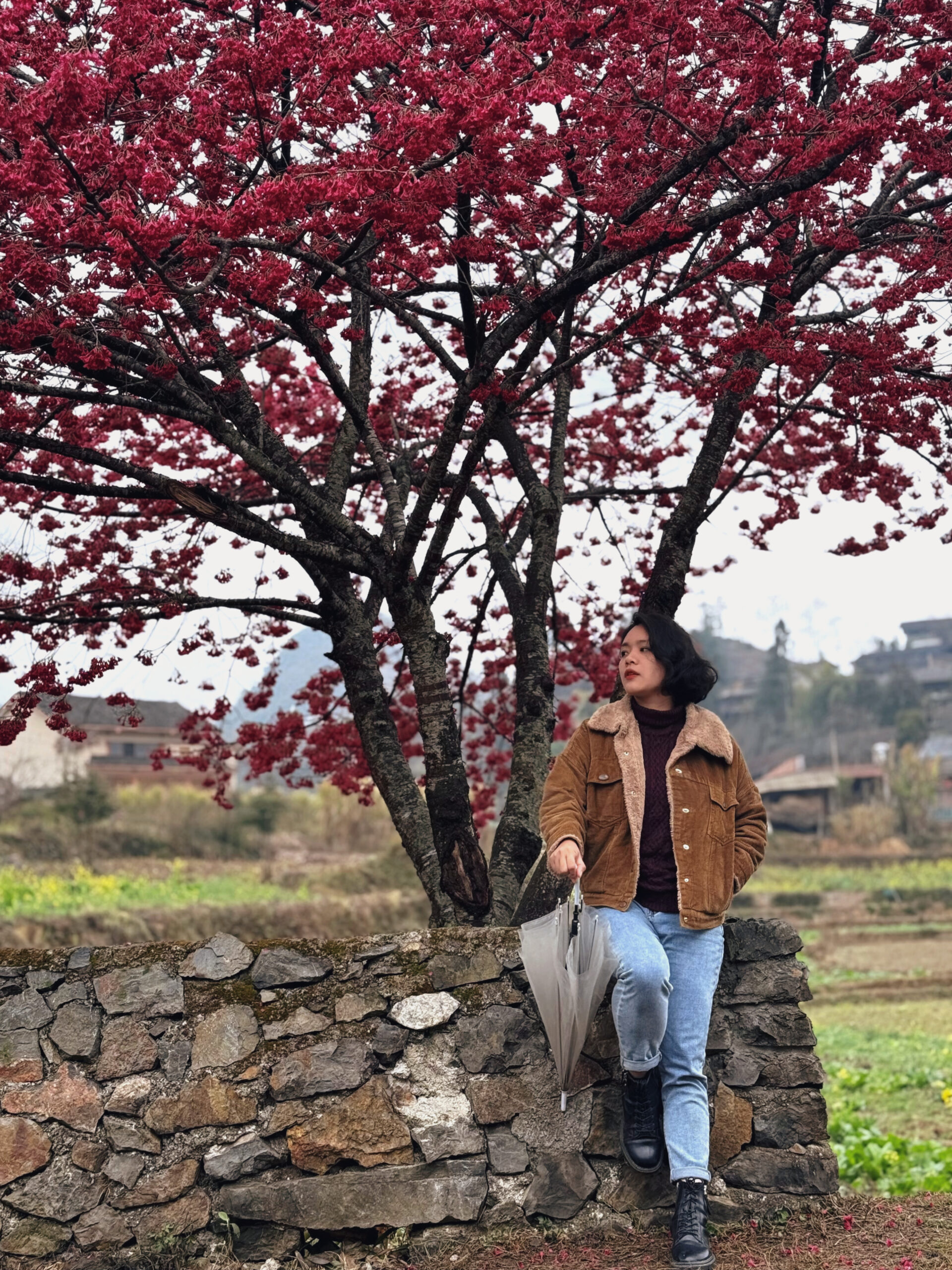
Above is essential information for your March exploration of Ha Giang. This is one of the busiest tourism periods in Ha Giang thanks to comfortable weather, vibrant scenery, and various flowers in bloom. If you’re ready for your journey, don’t hesitate to contact Phieutravel.com for suitable itinerary advice and begin your adventure conquering the limestone plateau today!
Read more:
- The Ultimate Guide to Ha Giang’s Kilometer Zero Milestone
- Is There a Ha Giang Airport and How to Reach Ha Giang by Air Travel
- How Far is Ha Giang from Hanoi? A Complete Travel Guide

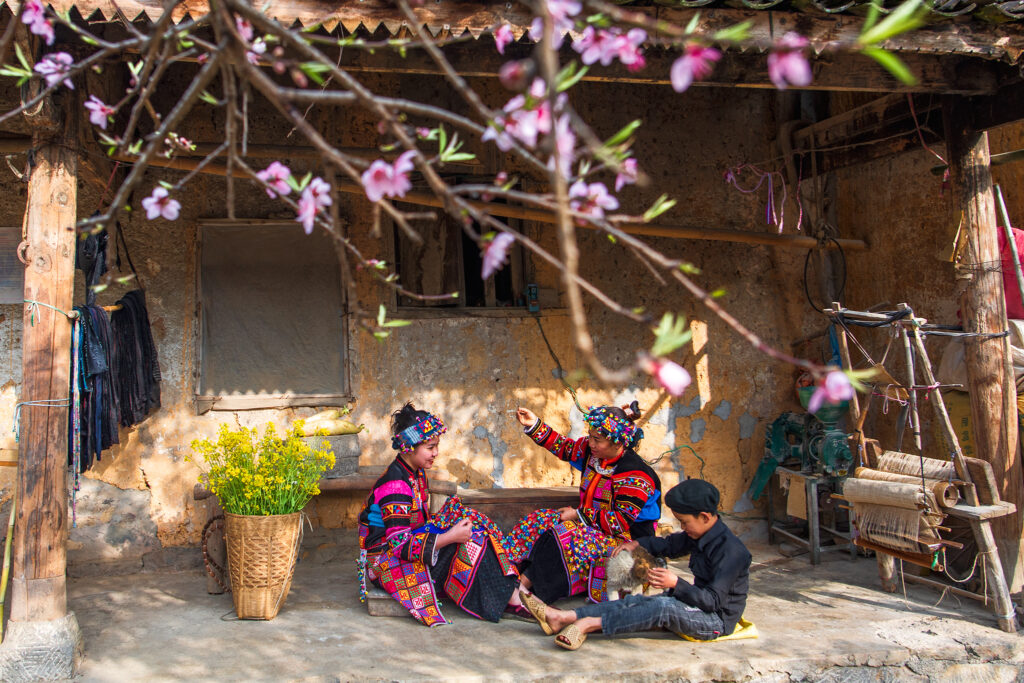
You Might Also Like
Ha Giang Weather in September: Complete Guide for Travelers
Exploring the magnificent Ha Giang Loop in September offers travelers a perfect balance of favorable[...]
Quan Ba Twin Mountains: Ha Giang’s Iconic Fairy Hills and Complete Travel Guide
The mystical Quan Ba Twin Mountains rise from the emerald valleys of Ha Giang like[...]
Vuong family mansion: the architectural marvel and cultural legacy of Ha Giang
Deep in Vietnam’s northern highlands, where mist-shrouded mountains meet terraced rice fields, stands a testament[...]
Ha Giang Loop Safety Tips: How to Ride Securely in Vietnam’s Northern Mountains
The Ha Giang Loop, with its winding mountain roads and breathtaking landscapes, offers one of[...]
The Ultimate Guide to the M-Shaped Curve on Ha Giang Loop
Vietnam’s remote northern province of Ha Giang hides a natural wonder that has captivated adventurous[...]
Most Beautiful Places to Visit in Vietnam: Essential Destinations and Insider Tips
Vietnam captivates travelers with its stunning landscapes, rich cultural heritage, and warm hospitality. From mist-shrouded[...]
Beyond the Beaten Path: Discovering Ha Giang Province in Northeast Vietnam
Ha Giang Province in Northeast Vietnam stands as one of the country’s last frontiers for[...]
Rainy season in Ha Giang: what to expect, when to go, and travel tips
Vietnam’s northern frontier reveals a different face during the rainy season, transforming Ha Giang’s limestone[...]